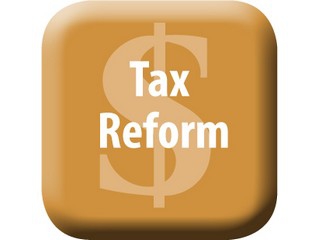The Focus - Our Tax E-Newsletter |
New York Tax Reform

New York State did some major revisions in their latest tax reform. Some of the moves seem to portray New York as a more taxpayer-friendly state than it used to be known as. Business owners still need to be aware of certain changes in order to avoid what could be an unforeseen, very unpleasant tax surprise.
One major revision was New York creating a bright-line economic nexus test. It is important to take heed that this bright-line test is exclusively for corporate business entities (both C and S corporations). This change helped clarify what could have previously been likened to wading through brackish, muddy waters. Beginning in 2015, corporations will automatically be deemed to have nexus in New York if they receive $1 million or more from New York sources. Using the New York allocation sourcing rules, if receipts would be required to be included in the receipt factor’s numerator, they are New York receipts for the $1 million bright-line test. For S corporations, if the $1 million New York receipts test is met, the S corporation is subject to the fixed-dollar minimum fee and the shareholders are subject to New York’s personal income tax.
A market based approach has been adopted in order to properly source corporate receipts. The New York statute specifically outlines how certain types of receipts need to be sourced. Receipts not addressed separately in the New York statute will be sourced to the location of the customer using a hierarchy method. The taxpayer will now be forced to ask customers where the benefit of its services will be received. This happens to be a huge difference from the existing method where New York receipts are sourced by corporations if the services are performed in the state, or to the extent they are earned in New York for other receipts.
Unfortunately, the nexus tests for partnerships and sole proprietors will no longer be the same as corporations starting in 2015. A physical presence within the state constitutes nexus. New York source income for partnerships is defined as the ownership of an interest in real or tangible property in New York State, or if the partnership carries on a business, professions, trade, or occupation in New York. If a partnership or LLC is owned by an S corporation, it is important to realize that the corporate economic nexus rules apply.
New York source income for non-resident individual taxpayers owning partnerships and sole proprietors includes any federal adjusted gross income connected with or derived from New York sources. This constitutes income from businesses, professions, trades, or occupations carried on within the state. This includes any pro-rata share of New York S corporation income or a distributive share of New York partnership income. Apportionment is not required if the New York income can be separately accounted for by maintaining separate records and books. An equally weighted three-factor apportionment percentage based on payroll, property, and gross income must be used when separate records are not maintained.
Although still subject to the capital tax as well as the minimum tax based on New York receipts, C corporations after January 1, 2014 meeting the definition a qualified New York manufacturer have a 0% entire net income tax rate. The capital tax is beginning to be phased out. A qualified New York manufacturer is a business that has all of its real and personal property located in New York, or has manufacturing property in New York with an adjusted basis of at least $1 million. A manufacturer has to be engaged in the production of goods by manufacturing, processing, assembling, extracting, mining, refining, agriculture, farming, horticulture, viticulture, floriculture, or commercial fishing.
A pitfall lies in wait for out of state manufacturers having nexus with New York State, but not having any property located within New York, as they will not be afforded the 0% entire net income tax rate. Also, individuals owning interests in flow-through entities cannot utilize the 0% entire net income tax rate. In this scenario, it may be advised for business entities to choose a C corporation structure as any money remaining inside the company will be either tax-free or tax-deferred.
New York made some favorable moves in the area of estate taxation. Over the years more and more attention has been placed on succession planning as increased wealth has been passed down multiple generations. As of April 1, 2014, the generation-skipping tax was repealed. Also, the basic estate tax exclusion amounts have been increased. For decedents dying on or after April 1, 2014 and before April 1, 2015, the exclusion increased from $1,000,000 to $2,062,500. For decedents dying on or after April 1, 2015 and before April 1, 2016, the exclusion increases to $3,125,000.
The new tax year has started and business entities must start abiding by the new rules. Please feel free to contact your Dermody, Burke & Brown tax advisor to further discuss any questions you may have.
The information reflected in this article was current at the time of publication. This information will not be modified or updated for any subsequent tax law changes, if any.
